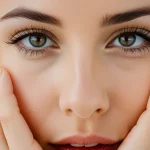Key Milestones in the Evolution of UK Cuisine
The 20th-century British cuisine experienced pivotal shifts that shaped modern UK cuisine history. Early in the century, British food traditions were heavily influenced by simplicity and locally sourced ingredients, with hearty meals like roasts and stews dominating everyday life. However, the World Wars brought drastic changes. Wartime rationing imposed strict limitations on food availability, forcing innovation within scarcity and altering the British palate.
Post-war rationing continued into the 1950s, emphasizing staples such as bread, potatoes, and canned goods. This period marked a turning point as the British public had to adapt creatively, balancing limited resources with nutritional needs. By the late 20th century, social transformation and economic recovery catalyzed the evolution of British food, introducing a wider variety of ingredients and global influences.
In parallel : What Are the Unique Elements of Traditional UK Cuisine?
Advancements during this time reflected not only changing tastes but also increased access to international flavours. The transition from traditional, quite uniform meals to more diverse and experimental dishes highlighted how British food evolved throughout the century. This journey from early traditions to modern versatility illustrates the resilience and adaptability central to UK cuisine history.
Influences Shaping British Food Culture
British food culture has profoundly evolved due to multicultural influences on UK food. Immigration has been a major catalyst in this transformation. Communities from South Asia, the Caribbean, and Eastern Europe introduced rich culinary traditions that expanded the diversity of UK cuisine history. Dishes like curry became synonymous with British food, illustrating how immigration and cuisine are intertwined.
This might interest you : What are some innovative recipes for using clotted cream?
Globalization further accelerated this evolution. The rise of international flavours made available through travel and trade has enriched everyday British meals. The introduction of global spices, ingredients, and cooking styles created a fusion that defines modern UK food culture. This shift is not just about adding new tastes; it reflects the evolution of British food into a more inclusive and experimental landscape.
Travel and technology played essential roles in this change. Easy access to global cuisine via media and culinary tourism broadened public palates. Furthermore, technological advances enabled the import and preservation of exotic ingredients, deepening cultural exchange. Together, these factors highlight how multicultural influences on UK food shaped today’s diverse and dynamic culinary scene.
Transformation of Ingredients and Cooking Methods
The evolution of British food owes much to the dynamic shift in British ingredients and cooking techniques. Over time, UK cuisine history has embraced an expanding variety of local produce alongside numerous exotic ingredients introduced by multicultural influences. This blend has enriched traditional cooking, allowing recipes to evolve from simple, staple-based dishes into more diverse, flavourful meals.
Technological advances have dramatically reshaped the kitchen environment. Modern cooking devices such as microwave ovens, food processors, and sous-vide equipment have made food preparation faster and more precise, encouraging experimentation. These innovations empower home cooks and chefs alike to explore texture, temperature, and taste with greater control.
The 20th-century British cuisine marked the beginning of this transformation, starting with ingredient accessibility after wartime shortages, progressing through the adoption of international spices and fresh produce. Today, the shift is visible in the fusion of traditional techniques with contemporary ones, mixing slow-cooked roasts with modern, health-focused recipes. This continuous adaptation highlights UK cuisine history’s resilience and openness to innovation, combining heritage with modern culinary science.
Socioeconomic Impacts on What Britain Eats
Economic factors British food have deeply influenced the UK cuisine history, particularly during times of hardship. The wartime impact on cuisine was profound; during both World Wars, rationing restricted access to many ingredients, forcing households to adapt with limited resources. This scarcity altered traditional eating habits and emphasized resourcefulness in meal preparation.
Post-war recovery brought gradual expansion in food availability, which combined with immigration and growing multicultural influences, led to more diverse and vibrant flavours in British food. This period marked a transition from austere rationed meals to richer, more varied diets, reflecting broader social and economic improvements.
In recent decades, food supply UK systems have adapted again with a focus on sustainability amid ongoing economic challenges. Rising food costs and environmental concerns guide many choices, encouraging seasonal, local produce and reducing waste. These trends reflect a modern awareness in UK cuisine history that balances affordability, ethics, and quality.
Thus, economic conditions—past and present—play a pivotal role in shaping British food culture, influencing what people eat and how UK cuisine evolves to meet changing societal needs.





